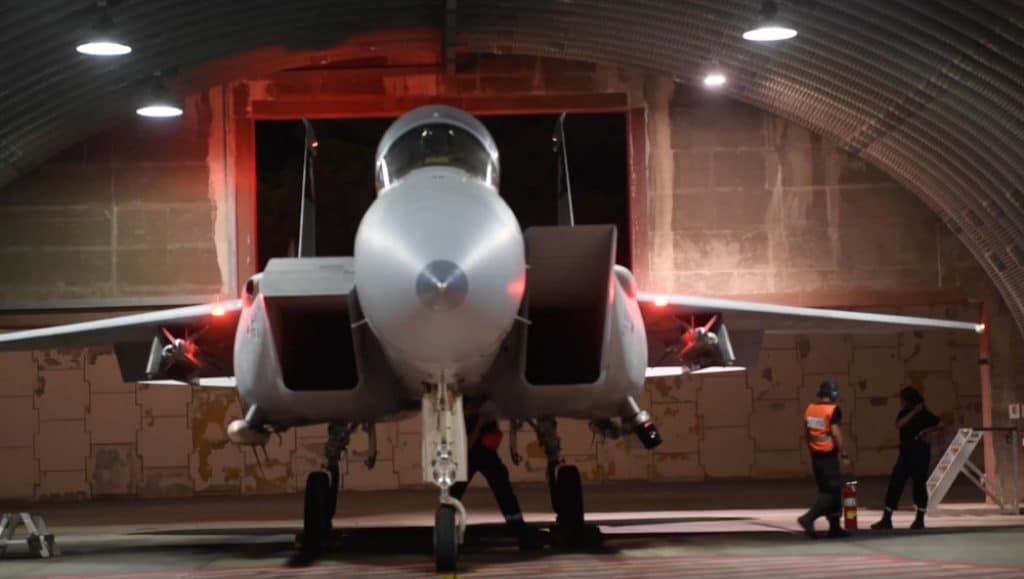
The Israel Defense Forces (IDF) used approximately 100 warplanes to confront a large Hezbollah attack in the early morning hours of August 25.
“This morning, we thwarted a large-scale attack by the Hezbollah terrorist organization targeting northern communities and locations in central Israel,” IDF Spokesperson Rear Admiral Daniel Hagari said in a statement on the evening of August 25. The attack by Hezbollah was widely expected for three weeks after Hezbollah vowed to retaliate for an IDF airstrike that killed Hezbollah commander Fuad Shukr on July 30.
Hezbollah claimed in its Al-Manar media that the attack was the first “phase” of what might be several attacks on Israel. The Iranian-backed terrorist group has been vowing for weeks to increase its attacks on Israel beyond its usual daily offensives, which usually consist of several rocket launches or kamikaze drone strikes. The vow to retaliate is part of a larger Iranian threat to also retaliate for the killing of Hamas leader Ismail Haniyeh in Tehran on July 31. Together, these threats put Israel on high alert and caused commercial airlines to cancel many flights to the country.
The IDF said it monitored Hezbollah over the previous weeks and used aircraft patrols to prepare for the escalation that began just after four in the morning on August 25. “As soon as we identified Hezbollah’s intention to carry out the attack, we thwarted the majority of the attack,” Hagari said.
Israel launched widespread airstrikes to preempt Hezbollah’s attack by targeting rocket launchers. Over 270 targets were struck in Lebanon over several hours, which the IDF said disrupted Hezbollah’s plans. “Approximately ninety percent of the targets struck were short-range rockets aimed at northern Israel. Hezbollah planned to harm Israeli civilians. Hezbollah managed to launch only about two hundred and thirty rockets and over twenty unmanned aerial vehicles,” the IDF concluded. Most of the projectiles Hezbollah fired were intercepted.
Hezbollah claimed that it launched 320 rockets at Israel, the largest barrage since the group began its attacks on Israel on October 8, 2023. The Iranian-backed group has escalated attacks in the past with large barrages, sometimes launching between 100 and 200 rockets and drones in a day. The attacks set off sirens in more than 80 communities in northern Israel, according to an Israeli smartphone application that tracks these alerts. Some communities heard sirens sound more than once as the strikes unfolded from 4:45 am to 7:30 am. Most of the attacks consisted of rockets, but Hezbollah also launched kamikaze drones, both of which targeted the northern Galilee and sites in the Golan.
The furthest south that sirens sounded was in the region of Acre, a coastal city around 18 miles south of the Lebanese border. In general, the pattern of Hezbollah’s targets on August 2 was similar to those it has struck in the past. Most of its rockets were aimed at northern Israel, including areas already evacuated by civilians. Hezbollah said it targeted 11 sites, including several IDF bases and barracks in the northern Galilee and the Golan. The sites also included the Meron air traffic control base, which Hezbollah has targeted numerous times with rockets. Israel’s Iron Dome air defense system has intercepted most previous attacks.
The IDF said that around 30 Hezbollah terrorists have been eliminated over the past week. In addition, Hagari said that six more members of Hezbollah were killed on August 25. One Israeli sailor serving on a patrol boat was killed by shrapnel from an interception.
Considering the large number of Israeli airstrikes, overall Hezbollah casualties on August 25 were low. This toll is typical of the kind of conflict Hezbollah and Israel have engaged in over the last 10 months, where Israel’s retaliatory strikes consist of using precision munitions to hit terrorist infrastructure rather than Hezbollah personnel.
More than 420 Hezbollah members have been killed, and the group has launched more than 7,500 rockets and 200 drones at Israel over 10 months of attacks.







